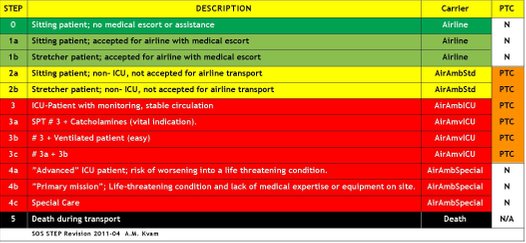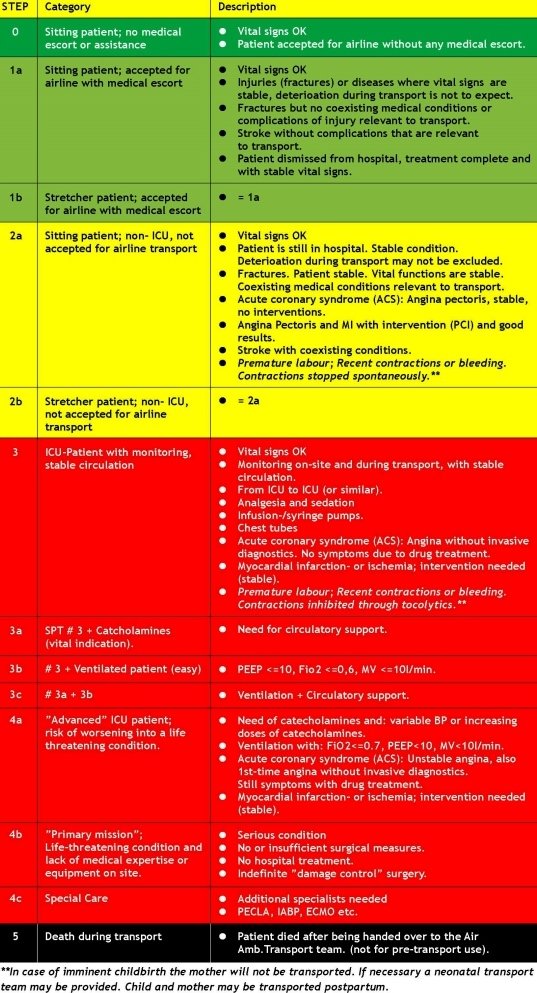24. The STEP System
In 2011 a group of larger assistance organisations (ADAC, MedCall, and SOS International) introduced a joint system for categorising patients in relation to air transport – STEP.
(Step-categorising of Aeromedical Transport by Expression of Symptoms in Patients).
The purpose of the system is to establish a simple scale to:
• Get an idea early on of whether transport (including air ambulance) will be required in the
process of handling a case.
• Assess the patient’s clinical condition and the transport risk.
• Simplify the communication between the consultant physician and the air ambulance section
when ordering an air ambulance.
• Assess the possibility of co-transport of patients.
• Define the requirements for type of escort and level of monitoring.
• Enable a standardising evaluation of the cases (pre-transport vs. post-transport).
The scoring system:
When working with a case, the consulting physician continuously fills in a list of standard questions about the patient’s respiratory and cardiovascular status, degree of mobilisation, prognosis of home transportation, etc. On the basis of these questions, the system automatically calculates the patient’s STEP category.
Extract from the STEP procedure (SOS International):
STEP 0 is a patient able to travel without a medical escort and without a MEDIF.
STEP 1 is a patient who is expected to be accepted on a commercial flight with a MEDIF.
STEP 2 is a patient who is not expected to be accepted on a commercial flight.
STEP 3 is intensive care patients of various types.
STEP 4 comprises the most critically ill intensive care patients, including patients who are not
stable, plus other special transport, e.g. incubator transports.
STEP 5 is exclusively used after transport has taken place for categorising the situation where a
patient has died during the transport.
Examples of different types of patients and STEP-categories:
001. Frontpage
001. Foreword
001. Contributors
001. Aeromedical Problems
012. Planning the Air Transportation of Patients
013. Airline Requirements
015. Transportation of Disabled Persons
016. Cardiac Disorders
019. Gastrointestinal Disorders
010. Central Nervous System Disorders
011. Ear, Nose, and Throat Disorders
012. Eye Disorders
013. Mental Disorders
014. Gynaecological and Pregnancy Problems
015. Transportation of Sick Children
016. Infectious Diseases
017. Orthopaedic Injuries
018. Cancer
120. Acute Mountain and Decompression Sickness
021. Burns and Plastic Surgical Problems
122. Airsickness
123. Jet Lag
124. The STEP System
125. Specialised Transportation of Patients
126. First Aid on Board – Legal Considerations
27. The History of Air Transportation of Patients
28. Oxygen supplementation in flight - a summary
Latest update: 29 - 02 - 2020

